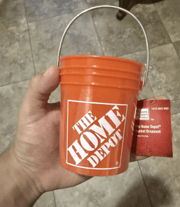
If you rely on food assistance to help cover groceries, you may have noticed your monthly benefits look a little smaller. The USDA has confirmed a reduction in SNAP payments, and millions of Americans are now feeling the impact. Many seniors, in particular, are wondering how long this change will last and what it means for their next payout.
The update comes amid a federal government shutdown that’s disrupted funding for several programs, forcing the USDA to draw from a limited emergency reserve. Here’s what’s happening and what SNAP recipients should expect moving forward.
Why are SNAP benefits being reduced?
The ongoing shutdown has left SNAP scrambling for resources. The program typically costs around $8 billion each month and serves roughly 42 million Americans. With Congress gridlocked, the USDA is now relying on a $6 billion contingency fund approved by lawmakers to temporarily keep benefits flowing.
But that money doesn’t stretch far enough to maintain full payments. According to a memo sent to state SNAP directors, federal officials plan to use $4.6 billion of the fund to cover about half of the program’s regular costs, while reserving roughly $1.4 billion to help states handle administrative needs like processing applications and disbursing benefits.
This reserve fund was approved by Congress specifically for situations like this, but it’s not enough to cover everyone’s full benefits. As a result, the USDA has had to make some tough decisions about how to stretch those dollars as far as possible.
How much will you get now?
As a result, the USDA has issued new, reduced benefit amounts. The latest calculations indicate that a single person on SNAP will receive $149 per month, while a two-person household will receive $273 per month. These adjusted figures went into effect on November 1, the first day payments were delayed under the new funding plan.
People living in Guam, the US Virgin Islands, Hawaii, and Alaska will continue to receive slightly higher amounts due to the higher cost of living. For instance, a four-person household in rural Alaska can receive as much as $997 each month under the new rate.
It’s important to note that these amounts don’t include any extra help your state might provide. Some states have pledged to use their own savings to help fill the gap left by the federal funding shortfall, so check with your local SNAP office to see if you qualify for additional support.
What about administrative delays?
States are required by law to notify participants about any changes to their benefits. However, the USDA has warned that it may take several weeks or even months for every account to reflect the new amounts. Patrick Penn, Deputy Under Secretary for the USDA’s Food, Nutrition, and Consumer Services, said in court that the transition period will vary by state.
If you haven’t seen your updated benefits yet, don’t panic. Officials say payments are being processed as quickly as possible, and no one should lose eligibility during the adjustment period.
What should you do now?
1. Check your account: Log in to your state’s SNAP portal or call your local office to see your current benefit amount.
2. Watch for notifications: States must inform you of any changes, so read any letters or emails from SNAP carefully.
3. Ask about state assistance: Some states are stepping up to help cover the shortfall. Don’t hesitate to ask your local office if you’re eligible for extra support.
4. Plan your budget: With reduced benefits, it’s more important than ever to stretch your food dollars. Look for local food banks, community meal programs, and senior centers that may offer additional resources.
Also read: SNAP pause in November: Where to turn for extra food help
Why this matters for older Americans
For many older adults and families, SNAP remains a crucial safety net, especially as grocery and living costs continue to rise. Even a small cut in monthly assistance can make a big difference for those on fixed incomes. The USDA’s reserve fund is helping prevent a complete lapse in payments, but until Congress reaches an agreement, these reduced rates are likely to remain in place.
This isn’t the first time SNAP has faced financial strain, and experts say it may not be the last. The program’s funding has long fluctuated with political negotiations in Washington, leaving millions who depend on it caught in the middle.
Read next:
- $21 million toward hunger relief: One city is giving away SNAP benefits this November. Are you eligible?
- Will SNAP benefits be refilled sooner than expected? What you need to know about the new emergency payments
- Lawmakers push new bill to keep SNAP payments flowing through November
Have you been affected by the recent SNAP changes? Do you have tips for stretching your food budget or finding extra help in your area? Share your experiences and advice in the comments below. Your story could help someone else in our community get through a tough time.






